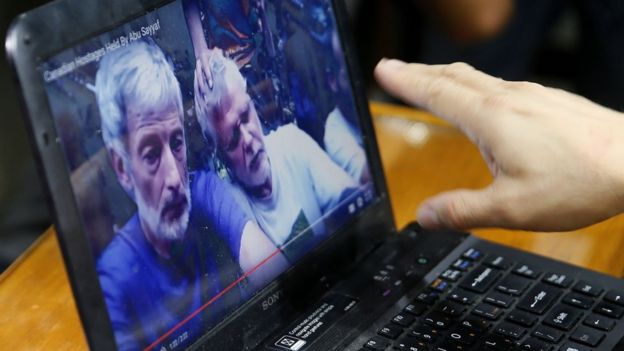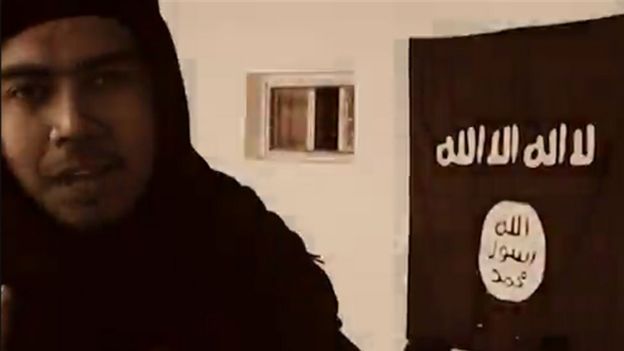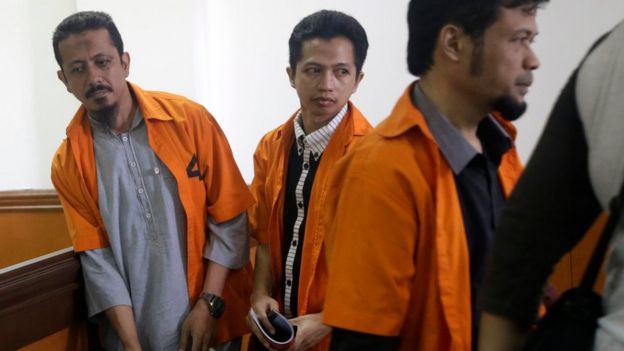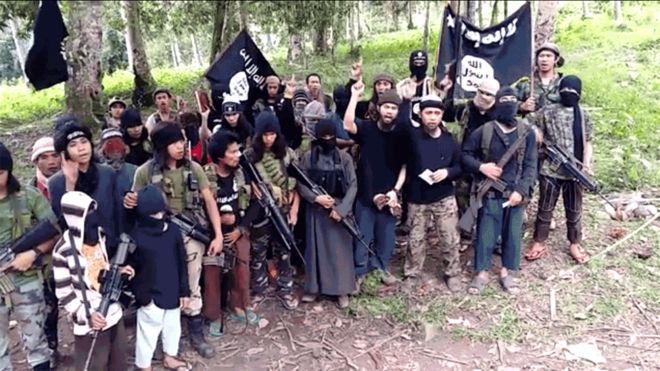The Islamic State threat in South East Asia
Islamist militanteveral countries in South East Asia have been anticipating attacks by the so-called Islamic State (IS) group in the region.
Indonesia, Malaysia and Singapore warned their citizens in 2015 that it was a question of when, rather than if, they would take place and this foresight was sadly proven right with the attack on Jakarta in January this year.
Authorities in the region have learned from Indonesia's experience of the Bali bombings in 2002 and several attacks afterward. These were carried out by Jemaah Islamiyah (JI) militants inspired by Al Qaeda, several of whom went to Afghanistan to fight with the Taliban in the 1980s, and then returned to the region with the skills and knowledge to carry out large-scale attacks.
IS is proving a new draw to would-be jihadists across the region. Several militant groups in South East Asia have pledged allegiance to it and up to 1,000 people are believed to have left Malaysia, Indonesia and the Philippines to fight with the group in Syria and Iraq.
 AP
AP
Indonesian and Malay speakers there have formed an official wing of the group, known as Katibah Nusantara Daulah Islamiyah, and security experts believe its leaders are trying to fund and encourage attacks across the region. Over the past year, IS has increased its propaganda efforts in Indonesian, which is similar to Malay, inciting people to join it but also to carry out attacks where they are.
The Jakarta attack in January, originally thought to have been directed by an Indonesian militant in Syria called Bahrun Naim, is now believed to have been organised by a local group called Jamaah Anshar Khilifah, who are followers of an influential jailed cleric, Aman Abdurrahman.
The authorities have also been watching for foreign militants who may travel to the region to pass on or pick up battlefield knowledge. Militant groups in the region are known to work together and fighters sometimes travel to another country to evade arrest in their own. South East Asia's long coastlines and porous borders make it difficult for the authorities to monitor or stop such movement.
 INDONESIAN JIHADIST PROPAGANDA
INDONESIAN JIHADIST PROPAGANDA AP
AP
In the last few months, the Philippine army has killed two Malaysians fighting with Abu Sayyaf in the south. Indonesian authorities have arrested four Uighurs from China over links to the Mujahidin Indonesia Timur (MIT) group in Sulawesi, and recently killed two who were fighting with MIT. Militants from Syria, Iraq and Turkey have also been sighted in the region, and arrested in some cases over planned attacks.
Security experts believe competition to lead a potential official IS regional province may spur further attacks. IS has acknowledged pledges by some groups in the region but not yet formally declared it a "province" as it has with other areas, such as Boko Haram in Africa, though there are signs it is moving toward doing so.s in the Philippines have released a Norwegian man taken hostage along with two Canadians who the group beheaded, officials say.

The Abu Sayyaf jihadists freed Kjartan Sekkingstad in southern Sulu province on Saturday. Unconfirmed reports say a large ransom was paid.
The group of four hostages was seized from a resort a year ago. A Filipina woman was freed in June.
Abu Sayyaf is fighting for an independent Islamic state.
It often attempts to raise money from ransom payments.
Mr Sekkingstad was freed in the town of Patikul on Jolo island. He was handed over to rebels of the Moro National Liberation Front group, which has signed a peace deal with the government and helped negotiate the release.
Philippine President Rodrigo Duterte had suggested in August that a large ransom had already been paid but that the jihadists were still holding Mr Sekkingstad.
The army said on Saturday Mr Sekkingstad had been freed because of its relentless attacks on the militants.
The four hostages had been taken from an upmarket resort on Samal island in Davao.
In April, the militants killed Canadian John Ridsdel after a ransom deadline expired, then a week later beheaded Robert Hall.
Mr Hall's partner, Marites Flor, was freed in June.
What is Abu Sayyaf?

A fractured network of militants. Some of its factions have sworn allegiance to so-called Islamic State.
It is one of the smallest but most radical of Islamist separatist groups in the southern Philippines. Its name means "bearer of the sword" in Arabic.
It split from the larger Moro National Liberation Front in 1991. Membership is said to number in the low hundreds.
What does it want?
The group has been agitating for the creation of an independent Islamic state in predominantly Catholic Philippines, and uses tactics such as hostage-taking and bombings to pressure the government.
How dangerous is it?
Numerous Filipino and foreign civilians have been kidnapped in the southern Philippines and parts of neighbouring Malaysia and used as hostages to extract ransoms.
Though some have been released after negotiations or attacks by Philippine forces, others have been murdered when demands were not met.
Abu Sayyaf has also said it carried out bombings in cities in the south and a ferry bombing in 2004 in Manila Bay that killed more than 100 people, considered one of the worst terror attacks in the Philippines.
No comments:
Post a Comment